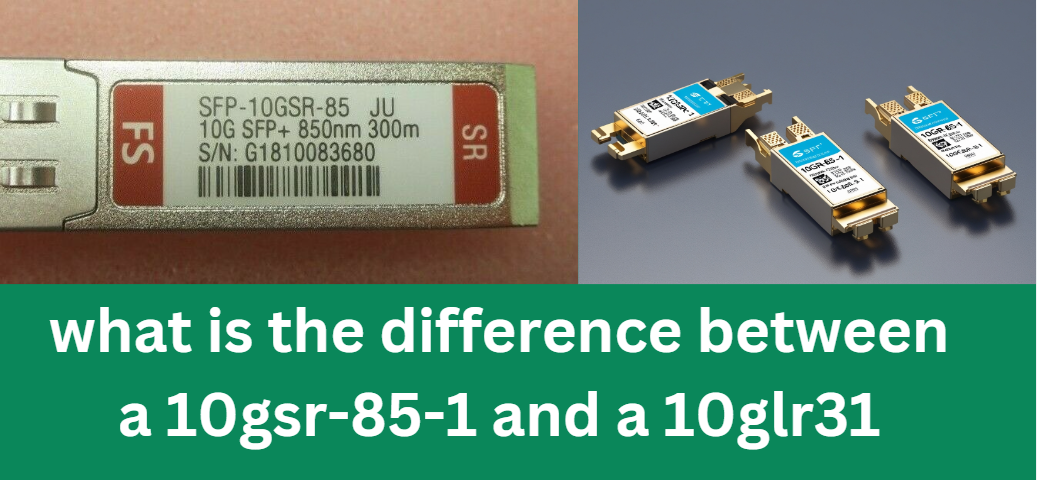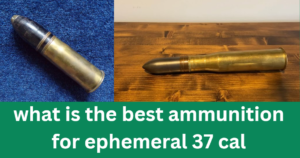When it comes to networking hardware, particularly in fiber optics and high-speed data transmission, understanding the differences between specific components is essential for making informed decisions. If you’re here wondering, “what is the difference between a 10GSR-85-1 and a 10GLR31?” then you’re likely trying to navigate the complexities of transceiver modules and their applications in enterprise networks, data centers, or other high-demand environments.
This article will delve deep into the differences between these two types of transceiver modules, offering a comprehensive look at their specifications, use cases, and how they perform in various network environments. We will not only compare the two models based on available technical data, but also provide interpretations and insights that will help you decide which transceiver suits your specific needs.
Contents
- 1 Introduction to Fiber Optic Transceivers
- 2 What is the Difference Between a 10GSR-85-1 and a 10GLR31?
- 3 Key Specifications Overview: 10GSR-85-1 vs. 10GLR31
- 4 FAQs
- 4.1 1. What is the primary difference between the 10GSR-85-1 and 10GLR31?
- 4.2 2. Which transceiver should I use for a data center?
- 4.3 3. Can I use 10GSR-85-1 for long-distance transmission?
- 4.4 4. Is single-mode fiber always better than multimode fiber?
- 4.5 5. How much more expensive is the 10GLR31 compared to the 10GSR-85-1?
- 5 Conclusion
Introduction to Fiber Optic Transceivers
Before we jump into the differences between the 10GSR-85-1 and 10GLR31, it’s important to first understand the context in which these transceivers are used. Transceivers are critical networking components that convert electrical signals to optical signals (and vice versa) for the purpose of high-speed data transmission over fiber optic cables.
Transceivers come in different types depending on the distance, type of fiber used (single-mode or multi-mode), and data rates. The two models in question—10GSR-85-1 and 10GLR31—are both 10 Gigabit Ethernet transceivers but are designed for different purposes and environments.
In this article, we’ll explore the following:
- Detailed specifications and use cases for 10GSR-85-1 and 10GLR31
- Key differences in transmission distance, media type, and network applications
- Performance considerations and installation requirements
- FAQs about these transceivers and their usage
Let’s dive deeper into what sets these two transceivers apart.
What is the Difference Between a 10GSR-85-1 and a 10GLR31?
The primary difference between the 10GSR-85-1 and the 10GLR31 lies in their optical transmission capabilities, specifically related to distance and the type of fiber used. Both transceivers support 10 Gigabit Ethernet, but they are optimized for different scenarios in terms of transmission range and the type of fiber optic cables they are designed to operate with.
1. Transmission Distance
The 10GSR-85-1 and 10GLR31 have distinct differences in terms of how far they can transmit data over fiber optic cables.
- 10GSR-85-1: This model is a short-range transceiver, commonly known as a Short Reach (SR) module. The “SR” typically refers to transmission over multi-mode fiber (MMF). The 10GSR-85-1 supports transmission up to:
- 300 meters over OM3 multimode fiber
- 400 meters over OM4 multimode fiber
- 10GLR31: On the other hand, the 10GLR31 is a Long Reach (LR) transceiver, optimized for longer distances and generally used with single-mode fiber (SMF). The 10GLR31 supports transmission up to:
- 10 kilometers over single-mode fiber (SMF)
Interpretation:
The clear distinction in transmission distance makes the 10GSR-85-1 ideal for short-range data transfers within a building or campus where the distance between networking devices is relatively short. In contrast, the 10GLR31 is more suited for longer-distance connections, such as between different buildings or even across cities.
2. Fiber Type: Single-Mode vs. Multi-Mode
Another critical difference between the 10GSR-85-1 and 10GLR31 is the type of fiber optic cable they use.
- 10GSR-85-1: As a short-range transceiver, the 10GSR-85-1 is designed to operate with multimode fiber (MMF). Multimode fiber is typically used for shorter distances and is less expensive than single-mode fiber. However, it has higher attenuation and dispersion, which limits its distance capabilities.
- 10GLR31: The 10GLR31 is designed for use with single-mode fiber (SMF), which has much lower attenuation and dispersion compared to multimode fiber. This allows the 10GLR31 to transmit data over significantly longer distances—up to 10 kilometers.
Interpretation:
The use of multimode fiber in the 10GSR-85-1 makes it the preferred choice for installations where cost is a concern and the distance between devices is short. However, for longer-distance applications, the 10GLR31’s use of single-mode fiber makes it the superior option.
3. Wavelength and Laser Type
The wavelength and type of laser used in a transceiver are important factors that influence the transmission distance and the fiber type used.
- 10GSR-85-1: This transceiver typically uses a 850nm wavelength laser, which is optimized for multimode fiber. The 850nm wavelength is characteristic of Short Reach transceivers like the 10GSR-85-1.
- 10GLR31: In contrast, the 10GLR31 uses a 1310nm wavelength laser. This longer wavelength is designed to work with single-mode fiber, providing the long-distance transmission capabilities that the 10GLR31 is known for.
Interpretation:
The wavelength difference between the 10GSR-85-1 (850nm) and 10GLR31 (1310nm) directly correlates with their fiber compatibility and transmission distance. The 850nm laser is well-suited for the high-bandwidth, short-distance needs of multimode fiber, while the 1310nm laser in the 10GLR31 is designed for long-distance transmission over single-mode fiber.
4. Cost Considerations
Price is often a deciding factor when choosing between transceivers. Generally speaking, there is a significant difference in cost between the 10GSR-85-1 and 10GLR31, primarily due to the types of fiber they support and their transmission capabilities.
- 10GSR-85-1: Multimode fiber and short-reach transceivers like the 10GSR-85-1 tend to be more affordable. This makes them a popular choice for businesses and organizations looking to cut costs without sacrificing performance for short-range applications.
- 10GLR31: Single-mode fiber transceivers like the 10GLR31 are more expensive due to their ability to handle long-distance transmission and the generally higher cost of single-mode fiber.
Interpretation:
For short-range applications where cost-efficiency is a priority, the 10GSR-85-1 is the better choice. However, if your network requires long-distance data transmission, the investment in 10GLR31 and single-mode fiber will pay off in terms of performance and reliability.
5. Power Consumption and Heat Dissipation
Power consumption is another important factor to consider, particularly in data centers where energy efficiency is a top priority.
- 10GSR-85-1: Short-reach transceivers like the 10GSR-85-1 tend to consume less power due to the shorter distances they cover. As a result, they generate less heat, which can be advantageous in high-density installations where cooling is a concern.
- 10GLR31: Long-reach transceivers like the 10GLR31, which operate over single-mode fiber, typically require more power to drive their longer-range signals. This increased power consumption can lead to higher heat output, requiring more advanced cooling solutions in some installations.
Interpretation:
If energy efficiency is a key concern, particularly in a high-density environment, the 10GSR-85-1 may be the better option due to its lower power consumption and heat output. However, for long-distance applications, the 10GLR31’s higher power consumption is a necessary trade-off for its extended range capabilities.
6. Applications and Use Cases
The 10GSR-85-1 and 10GLR31 are designed for different types of network environments, making each ideal for specific use cases.
- 10GSR-85-1: This transceiver is most commonly used in data centers and enterprise networks where devices are located within the same building or campus. It’s ideal for short-range data transmission, such as between servers and switches in a server room.
- 10GLR31: The 10GLR31 is better suited for wide-area networks (WANs), campus networks, and metropolitan area networks (MANs), where devices are spread out over much longer distances. It’s also frequently used for inter-building communication or long-distance connections within large facilities.
Interpretation:
For environments where devices are located in close proximity, such as data centers, the 10GSR-85-1 is the more practical and cost-effective solution. However, in larger network infrastructures that span greater distances, the 10GLR31 provides the necessary range and reliability.
Key Specifications Overview: 10GSR-85-1 vs. 10GLR31
| Feature | 10GSR-85-1 | 10GLR31 |
|---|---|---|
| Transmission Distance | Up to 300 meters (OM3), 400 meters (OM4) | Up to 10 kilometers (Single-mode fiber) |
| Fiber Type | Multimode Fiber (MMF) | Single-mode Fiber (SMF) |
| Wavelength | 850nm | 1310nm |
| Use Cases | Data centers, short-range data transmission | WAN, MAN, long-distance data transmission |
| Power Consumption | Lower power consumption, less heat | Higher power consumption, more heat |
| Cost | More affordable due to MMF compatibility | Higher cost due to long-range capabilities |
FAQs
1. What is the primary difference between the 10GSR-85-1 and 10GLR31?
The main difference is the transmission distance and the type of fiber each supports. The 10GSR-85-1 supports short-range transmission (up to 400 meters) over multimode fiber, while the 10GLR31 supports long-range transmission (up to 10 kilometers) over single-mode fiber.
2. Which transceiver should I use for a data center?
For most data centers where devices are located in close proximity, the 10GSR-85-1 is sufficient and cost-effective. However, if your data center spans multiple buildings or requires long-distance connections, the 10GLR31 may be necessary.
3. Can I use 10GSR-85-1 for long-distance transmission?
No, the 10GSR-85-1 is optimized for short-range transmission over multimode fiber. For longer distances, you’ll need the 10GLR31 or another long-range transceiver.
4. Is single-mode fiber always better than multimode fiber?
Not necessarily. While single-mode fiber offers longer transmission distances, multimode fiber is more affordable and easier to install, making it a better choice for short-range applications.
5. How much more expensive is the 10GLR31 compared to the 10GSR-85-1?
The 10GLR31 is generally more expensive due to its long-range capabilities and compatibility with single-mode fiber. The exact price difference depends on the vendor and the specific use case.
Conclusion
In summary, the difference between the 10GSR-85-1 and the 10GLR31 primarily lies in their transmission distance, fiber compatibility, and use cases. The 10GSR-85-1 is optimized for short-range data transmission over multimode fiber, making it an affordable and practical option for data centers and enterprise networks. On the other hand, the 10GLR31 is designed for long-distance transmission over single-mode fiber, making it ideal for wide-area networks and large-scale installations.
By understanding these differences, you can make an informed decision about which transceiver best suits your specific networking needs. Whether you’re optimizing a data center or building a long-distance network, selecting the right transceiver is key to ensuring reliable and efficient data transmission.





















+ There are no comments
Add yours